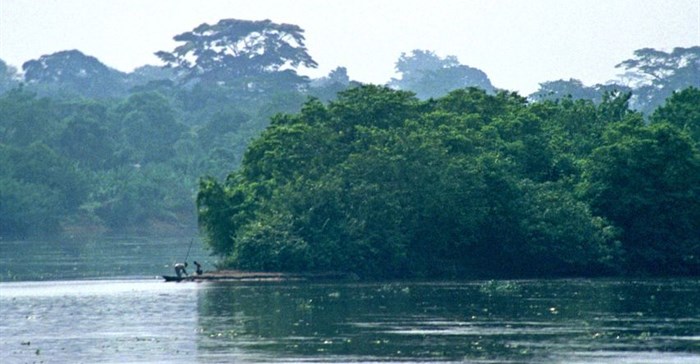Tropical Africa has two distinct features - rain forests which are dominated by trees and savannas which are dominated by grasses. Both depend on rainfall quantity and seasonality. Seasonality measures how constant the distribution of rainfall over the course of a year is - in other words how long the dry season is.
Forests located close to the Equator receive lots of rainfall constantly over the year, while savannas receive less rainfall and only during the wet season.
Forests and savannas are expected to be strongly affected in the coming decades by changing rainfall patterns, including increased dry periods and decreasing annual rainfall. These changes are already being felt. In some areas of Burkina Faso desertification is increasing, while in Chad rainfall is increasing. These changes are being linked to climate change across the world.
Forests and savannas are expected to be affected greatly by these changes because they depend heavily on rainfall quantity and seasonality.
Forests and savannas are important ecosystems
Savannas and forests function very differently but they are important ecologically and economically. They sustain a lot of plant and wildlife. Tropical forests have exceptionally high animal and plant species. They also play a crucial role in regulating the global climate, for example by storing lots of carbon. And people make a living off forests.
Most of sub-Saharan Africa’s agriculture takes place in savanna areas which support most of the continent’s cropland and pasture areas. Importantly, savannas such as the Serengeti National Park in Tanzania are also home to the largest animal populations on Earth.
But future changes in the climate could have an impact on these symbolic landscapes. For example, decreasing rainfall in forest areas, and increasing number of droughts, may cause trees to die. In savanna areas, more rain may increase tree growth and cover.
The way people are using the land can also have a big impact on forests and savannas. For example changing agricultural practices toward intensification and conversion of very large areas to cropland has been shown to have a major impact. Thus, conservation efforts need to start taking into account the effects of climate change as well as the potential impact of agricultural conversion to target forests and savannas that are at greatest risk.
The ecological importance of fire
The Congo Basin is Africa’s main tropical forest block covering more than 178 million hectares – a third of the size of the Amazon. Tropical forests are also present in East and West Africa but in smaller areas. Trees in these tropical forests are very sensitive to disturbances such as fires which are exacerbated by droughts. Indeed, increasing drought can enable fires to spread from savannas into the adjacent forests. This is what happened during the massive wildfire in the Congo Basin in January 2016.
For their part, savannas need disturbances like fire but repeated fires limit the number of trees, and thus the tree cover, and promotes biodiversity.
Responding to climate change and land use
The prediction is that rainfall will increase in some savanna areas of Central African Republic. This will lead to an increase in tree cover within savannas. If not compensated by fire landscape opening, this tree cover increase could be an issue because it would limit the quantity of grasses accessible for livestock and wild herbivores.
The predictions for the drier regions are more variable. In some areas of the Sahelian region, like Chad, it’s predicted that rainfall will increase, similarly leading to an increase in tree cover. But this is likely to have a positive effect because it will mean more productivity for grasses and trees. In other areas, like in Burkina Faso, the length of the dry season may increase which could drive desertification.
In the case of the Congo Basin, an increase in seasonality could lead to a decrease in tree cover because it’s likely to limit tree growth and increase tree mortality.
But climate change is not the only threat that forests and savannas are facing. The way people are using these two ecosystems is also having an impact. For example, new development policies suggest that more savanna areas should be targeted for biofuel production.
 Future simulations suggest that increasing cropland and pastureland by 2070 will modify tree cover in both forests and savannas more than climate change. Environmental policies are crucial because they have the power to influence where large conversions to agriculture take place. This is particularly important for areas of low population densities and where agricultural practices are still traditional, as in the Central African Republic.
Future simulations suggest that increasing cropland and pastureland by 2070 will modify tree cover in both forests and savannas more than climate change. Environmental policies are crucial because they have the power to influence where large conversions to agriculture take place. This is particularly important for areas of low population densities and where agricultural practices are still traditional, as in the Central African Republic.


























